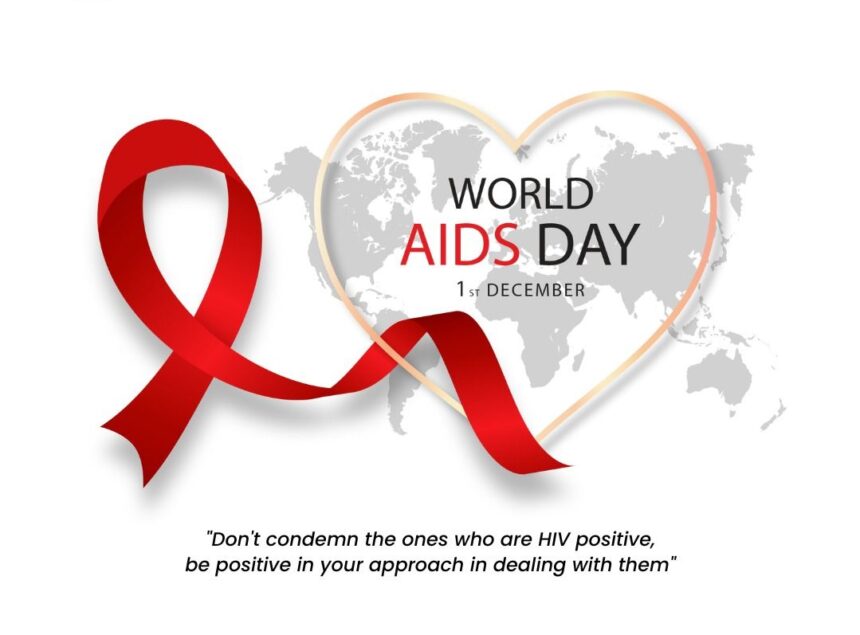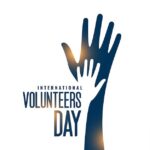❤️ Introduction: More Than a Day – A Global Call for Awareness and Action
World AIDS Day, observed annually on December 1st, is more than a health observance—it’s a heartfelt movement that unites the globe in memory, awareness, and advocacy. Since its inception in 1988, it has become a vital platform to honour lives lost to HIV/AIDS, show solidarity with those living with HIV, and combat stigma and misinformation.
- ❤️ Introduction: More Than a Day – A Global Call for Awareness and Action
- 🕰️ History of World AIDS Day
- 📌 7 Powerful Facts About World AIDS Day
- 📆 Timeline of Major Milestones in AIDS Awareness
- ❓ Frequently Asked Questions (FAQs)
- Q1. What is the purpose of World AIDS Day?
- Q2. Is AIDS still a major health issue?
- Q3. What’s the difference between HIV and AIDS?
- Q4. Can HIV be cured?
- Q5. How is HIV transmitted?
- 🌐 Significance of World AIDS Day
- 1. Raises Awareness
- 2. Breaks Stigma
- 3. Promotes Testing and Treatment
- 4. Honours Lives Lost
- 5. Encourages Supportive Policies
- 🙌 How People Observe World AIDS Day
- 💌 Wishing & Messages for World AIDS Day
- 🧠 Why World AIDS Day Matters in Our Daily Lives
- ✔️ Promotes Health Literacy
- ✔️ Encourages Empathy
- ✔️ Reduces Fear Through Facts
- ✔️ Strengthens Relationships
- ✔️ Fosters Activism
- 💡 Important Points to Remember
- 🏁 Conclusion: Let’s Lead With Awareness, Not Fear
- 🔖 Key Takeaways
As we journey through this article, you’ll discover the emotional and societal depth of World AIDS Day—covering its history, key facts, timeline, FAQs, observance, personal and societal significance, and how it impacts us daily as humans.
🕰️ History of World AIDS Day
World AIDS Day was established in 1988 as the first-ever global health day. It was created by James W. Bunn and Thomas Netter, two public information officers for the World Health Organization (WHO). Their aim was to raise awareness about the growing HIV/AIDS epidemic and to combat the stigma surrounding it.
At that time, HIV/AIDS was largely misunderstood, with sufferers often isolated socially and medically. The day initially focused on children and young people, later expanding to include all demographics affected by the virus.
Since then, UNAIDS (Joint United Nations Programme on HIV/AIDS) has taken leadership in organizing and updating global strategies around this observance, with a new theme each year reflecting current challenges and solutions.
📌 7 Powerful Facts About World AIDS Day
Date Established: December 1, 1988 — making it over 35 years old.
Global Impact: Over 38 million people currently live with HIV worldwide.
Lives Lost: More than 40 million people have died from AIDS-related illnesses.
Prevention Success: Antiretroviral therapy (ART) has turned HIV from a fatal disease into a manageable chronic condition.
Theme Each Year: Themes like “End Inequalities. End AIDS” help target global goals.
Red Ribbon Symbol: Universally recognized symbol of awareness and solidarity.
Youth At Risk: Every day, around 1,700 young people get infected globally.
📆 Timeline of Major Milestones in AIDS Awareness
| Year | Event |
|---|---|
| 1981 | First reported AIDS cases in the U.S. |
| 1987 | WHO forms the Global Program on AIDS |
| 1988 | First World AIDS Day observed |
| 1996 | UNAIDS founded to coordinate international response |
| 2000 | UN sets Millennium Development Goals, including fighting HIV/AIDS |
| 2012 | Introduction of PrEP (Pre-Exposure Prophylaxis) |
| 2020 | HIV response integrated with COVID-19 pandemic strategies |
| 2024 | Global theme: “Let Communities Lead” |
❓ Frequently Asked Questions (FAQs)
Q1. What is the purpose of World AIDS Day?
To raise awareness about HIV/AIDS, reduce stigma, commemorate lives lost, and support those living with HIV.
Q2. Is AIDS still a major health issue?
Yes. Despite medical advances, millions still lack access to testing and treatment, and stigma remains a global issue.
Q3. What’s the difference between HIV and AIDS?
HIV (Human Immunodeficiency Virus) attacks the immune system.
AIDS (Acquired Immunodeficiency Syndrome) is the final stage of HIV when the immune system is severely compromised.
Q4. Can HIV be cured?
There’s no cure yet, but ART (antiretroviral therapy) allows people with HIV to live long, healthy lives.
Q5. How is HIV transmitted?
HIV is spread through unprotected sex, sharing needles, blood transfusions (rare today), and from mother to child during birth or breastfeeding.
🌐 Significance of World AIDS Day
World AIDS Day is vital for several reasons — both globally and personally:
1. Raises Awareness
Many still lack basic knowledge about HIV/AIDS. This day fills educational gaps through global campaigns, workshops, and online resources.
2. Breaks Stigma
HIV-positive individuals often face discrimination. This day encourages compassion and understanding, challenging harmful stereotypes.
3. Promotes Testing and Treatment
It urges people to get tested and, if needed, begin lifesaving treatments without fear or shame.
4. Honours Lives Lost
With over 40 million deaths, it stands as a global mourning and remembrance day.
5. Encourages Supportive Policies
Governments are reminded to allocate resources for prevention, care, and community support systems.
🙌 How People Observe World AIDS Day
Across the globe, people and institutions mark the day in heartfelt and educational ways:
🧵 Wearing the Red Ribbon: A symbol of solidarity, support, and awareness.
🕯️ Candlelight Vigils: Held in memory of those lost to AIDS-related illnesses.
🏥 Free HIV Testing Drives: Clinics and NGOs offer free, confidential testing.
📚 School Awareness Programs: Educational workshops in schools and colleges.
💬 Social Media Campaigns: Hashtags like #WorldAIDSDay and #EndAIDS trend globally.
🎤 Public Speeches and Performances: Include testimonials by survivors and activists.
🤝 Community Outreach: Volunteers visit vulnerable groups to distribute information and condoms.
💌 Wishing & Messages for World AIDS Day
Though this is a serious observance, uplifting and respectful wishes are part of acknowledging the resilience of those affected:
“Let us remember, support, and unite. Every life matters. #WorldAIDSDay”
“Awareness is power. Education is protection. Compassion is healing.”
“Together, we can end HIV stigma and rewrite the story.”
“One red ribbon, millions of hearts. Never forgotten.”
“On this World AIDS Day, we choose love over judgment, science over fear.”
🧠 Why World AIDS Day Matters in Our Daily Lives
✔️ Promotes Health Literacy
AIDS education empowers individuals to make informed sexual and medical choices.
✔️ Encourages Empathy
Reminds us that compassion and support are human duties—not privileges.
✔️ Reduces Fear Through Facts
Understanding HIV reduces irrational fears and promotes safe behaviour rather than panic.
✔️ Strengthens Relationships
By normalizing conversations about testing, protection, and wellness, it leads to more open, trusting relationships.
✔️ Fosters Activism
It can inspire you to donate, volunteer, or advocate for healthcare reform in your area.
💡 Important Points to Remember
🌍 World AIDS Day is global—every voice, every life counts.
🩺 AIDS is preventable and manageable—but still deadly without care.
🧬 Science and awareness save lives; stigma and silence cost them.
❤️ Small actions—like sharing a post, wearing a ribbon, or talking to someone—can have big ripple effects.
🧑🤝🧑 It’s not just about disease; it’s about people, love, justice, and dignity.
🏁 Conclusion: Let’s Lead With Awareness, Not Fear
World AIDS Day teaches us to remember the past, protect the present, and transform the future. Whether you’re HIV-positive, HIV-negative, or don’t know your status, this day matters. It affects communities, economies, families, and hearts.
By honouring the lives lost and supporting the living, we don’t just commemorate—we act. And action, rooted in empathy and awareness, is what can finally end the AIDS epidemic in our lifetime.
Let’s make World AIDS Day more than a post or pin. Let’s make it a personal promise — to stand for truth, for life, and for love.
🔖 Key Takeaways
🗓️ Date: December 1st every year
🩸 Symbol: Red ribbon
👩⚕️ Purpose: Awareness, support, remembrance
🧠 Focus: Education, stigma reduction, access to care
🤲 Action: Wear, share, speak, support
❤️ Vision: A world without AIDS, fear, or judgment








